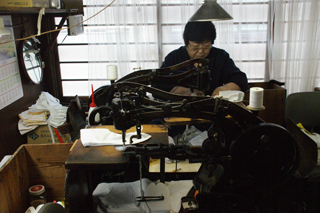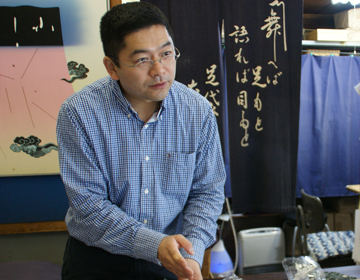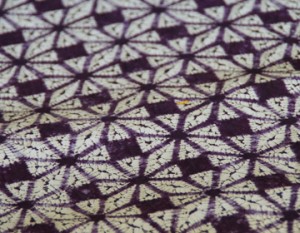Tabi shop with 230 year history
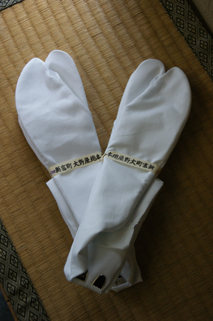
Founder Miyokichi Fukushima established a tailor in Mita, Tokyo during the Anei period (1772-1781). Moving to Shintomicho in 1849, Ohnoya Sohonten is a well established ”tabi” shop with more than 230 years of history. Even now many Kabuki and Noh performers and dancers go to Ohnoya for the special ”tabi” called the ”Shintomigata”.
Shintomigata is a ”tabi” that is made with narrow soles, and puffy toes. This form makes the feet look thin, small, and beautiful. It is popular with actors and performers who make their living with their appearance.
”Many actors who play female roles change their ”tabi” every day. So they order 50 or 60 pairs at a time.” the 7th generation Shigeo Fukushima told us.
Not many people wear Japanese kimonos recently, so the majority of their customers work in the traditional art industry such as Kabuki. Shintomigata is still quite popular with performers. In the back of the shop are numerous foot molds used for customized orders.
10 pieces of cloth for just 1 pair
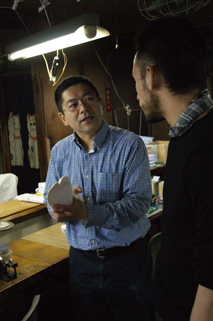
Japanese people all know what a ”tabi” looks like. But many are not familiar with how they are made or what they are made of. How many pieces of cloth does it take to one pair? The answer is 10. This was something that neither Nakata or his staff even anticipated until we actually observed the manufacturing process.
We visited the studio. The first step is cutting. Cloth is cut for the left and the right foot. 2 pieces are used for the inner side, 2 for the outer side, and 1 for the sole, amounting to 10 in total. Cutting is 2 dimensional so it requires skill. The pieces are then sewn together, but the different thread is used according to the part being sewn. The toes are difficult. Making the toes round and beautiful is difficult, even for a skilled artisan.
Yet there’s more work to be done. You still have to pound the ”tabi” with wood to soften the cloth, and then the thread is also softened so it doesn’t hurt the feet. The entire process is done with great care by skilled artisans to create a pair of ”tabi”.
An Ideal Tabi is Created by the Wearer
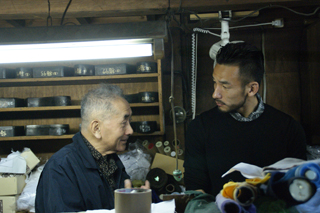
For someone who is not accustomed to Japanese attire, the ”tabi” may not feel comfortable when its first put on. At Ohnoya Sohonten, in addition to the customized ”tabi”, they sell 4 standard types. For those with high arches or width, small adjustments can make a big difference.
Was there a standard to good vs bad ”tabi”? Nakata posed the question to which Fukushima replied.
”That totally depends on the customer. We aim to satisfy our customers. To create something that fits.”
But it’s not just about the fit. At times they need to consider ways of easing the burden on the ankles, depending on what the ”tabi” is used for. The ideal form depends on the customer. For instance if the ”tabi” is to be worn for dancing, the feet need to look small and beautiful. For Noh and Kyogen, the ”tabi” needs to be made not to obstruct the movement of the feet, and must glide smoothly on the stage. For tea ceremonies or for people who sit with their knees folded for a long period, the ”tabi” needs to have extra room around the ankles, and must be wrinkle resistant. They are always striving to produce the perfect product for the customer’s needs. When watching a traditional Japanese performance, we hope you’ll give some attention to the feet.
